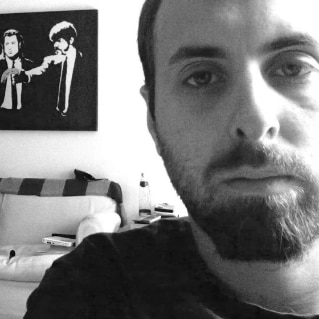2019 will be Akira’s year: it has finally been announced its live-action remake (2021 release date) and Katsuhiro Otomo, original creator of the manga and the film, has also unveiled a new Akira anime project, that will not be a sequel. After all, 2019 is the year in which the story of Akira is set. Of course, whatever happens, we will once again see Neo Tokyo (or what remains of it at some point), one of the most powerful symbols of the 1988 film, a very dense city built on the ashes of a Tokyo destroyed by the explosion of a nuclear bomb (which will later turn out to be something totally different)
Neo Tokyo - along with Blade Runner's Los Angeles, Minority Report's Washington D.C. and Coruscant's Galactic City in Star Wars - is one of the best known and shining examples of cities of the future. Neo Tokyo, just like many real cities, has in fact been able to influence other films and the real world, as is evident from the style of many opulent cities in the Persian Gulf area (Dubai above all). They are metropolises, children of Metropolis, the famous 1927 film by Fritz Lang, and of his idea of dystopia (resulted from a trip to New York after the First World War). The idea was that vertical development could serve to show the difference between the social classes of a terrible future, in which the skyscraper floor you occupied is a metaphor for your social status: elite on the top, masses on the bottom. Thanks to many improvements and an ever-increasing precision, film after film, this model of city has grown to represent our idea of the future: the vertical megalopolis. Just think of the fact that today's Tokyo is not very different from Akira's Neo Tokyo.
Yet recently the cities of the future that we see at the cinema have started to change. Science fiction has always been the projection of our anxieties about the present and what will become of us, and the cities of the future are changing because the expectation that we have about our tomorrow has changed too: it is no longer about the great accumulation, but rather about the great loss.
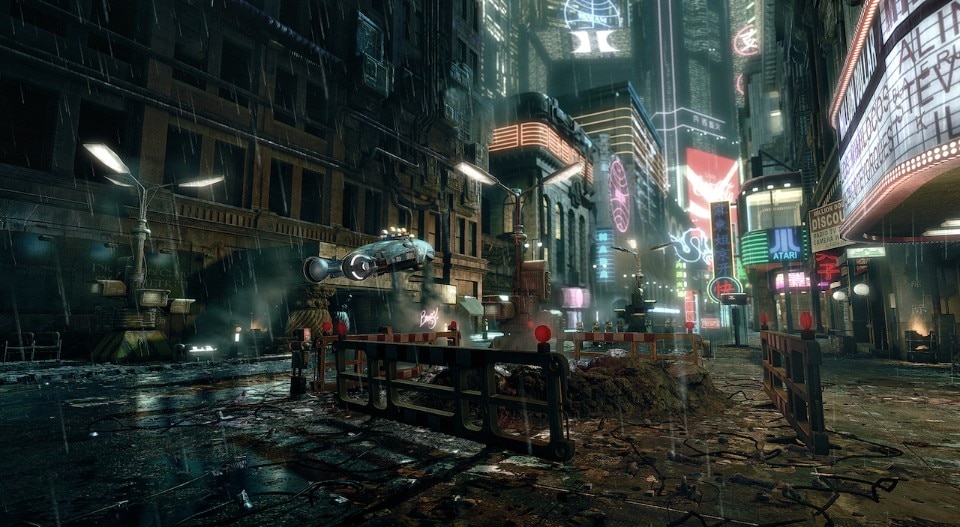
Vertical cities
Neo Tokyo is perhaps the city that reminds the most of Metropolis. Organized just like Manhattan, it is an island, connected to the mainland by a series of bridges, bursting with people and characterized by blinding lights and tall skyscrapers. As if it were a gigantic Times Square, there is something to do everywhere you go, its alleys are very narrow and only the highways seem to give a little breathing space (although it's the most dangerous place to be). Neo Tokyo is a city born from scratch, all brand-new and therefore totally different from Ridley Scott's Los Angeles, the other great vertical city.
Blade Runner had a much more realistic intuition, because it wanted to explore the verticality of the cities starting from below and Syd Mead (the designer) understood that whatever the future holds for us, it wouldn't sweep away the past. So, in his city, the brand new coexists with the old, Mayan pyramid-like buildings coexist with the Bradbury Building.
The final stage of the evolution of this idea of verticality can be found in some other films from a few years ago, like Elysium or Alita: Battle Angel: we’re talking about the city in the sky, a distant place, separated from the Earth, where the very elite live. The poor,on the other hand, live on the mainland, a gigantic suburban area where people can do nothing but dream of reaching the sky. In that case the metaphor with paradise is obvious (even literal in Elysium) but the principle is the same: the shape, position and size of the buildings stand for the amount of power of those who live there. The rich is like a God, towering over the poor.
This idea, as already mentioned, became reality especially in the metropolises of the Persian Gulf. Syd Mead himself said about Dubai: "The Middle East is a fantastic example of how science fiction is slowly becoming reality, as the size, vision and proportions of some of the projects in this area show. I would like to take part in some of the projects of this region and help shape it for a better tomorrow.”
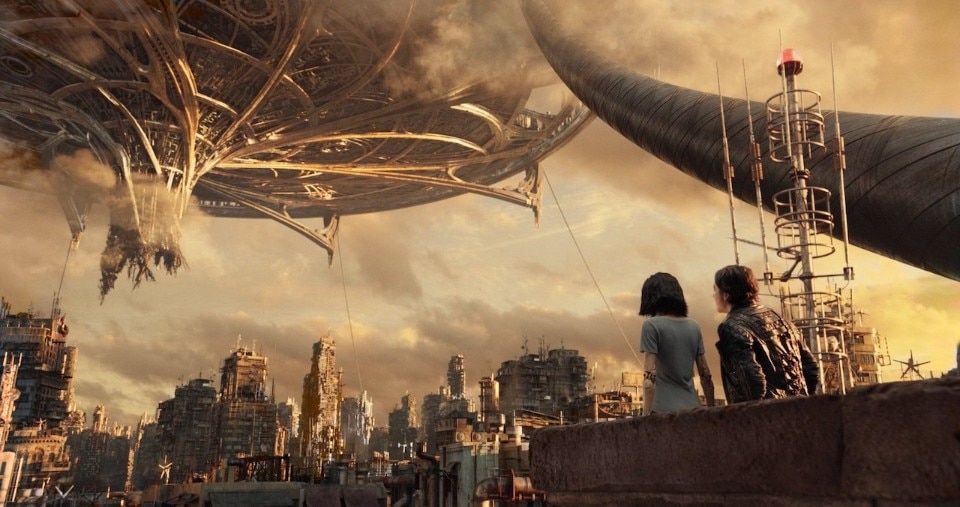
For a better tomorrow... Yet the science fiction that inspires these kinds of architecture rarely mentions a better tomorrow. The cities of the future that we are imitating are unfair, evil, aggressive and inhumane. Things To Come’s Everytown (from the book The Shape Of Things To Come by H. G. Wells) or the city of the more recent Tomorrowland are very rare utopias. Usually, poverty, dirt and the division between the rich and the poor, clashing with excessive cleanliness and sobriety (just think of Demolition Man) are symptoms of a future in which everything has gone wrong, while people were too focused on accumulating goods to stop it.
Horizontal pauperism
However, our imagination of the future is no longer influenced by this race towards accumulation. With the beginning of the crisis in the West, which is now resigned to a state of general impoverishment, the images of future cities that cinema has been showing us since the 2000s are less and less vertical and increasingly flat, less and less opulent and more and more humble, less and less inhabited and increasingly empty.
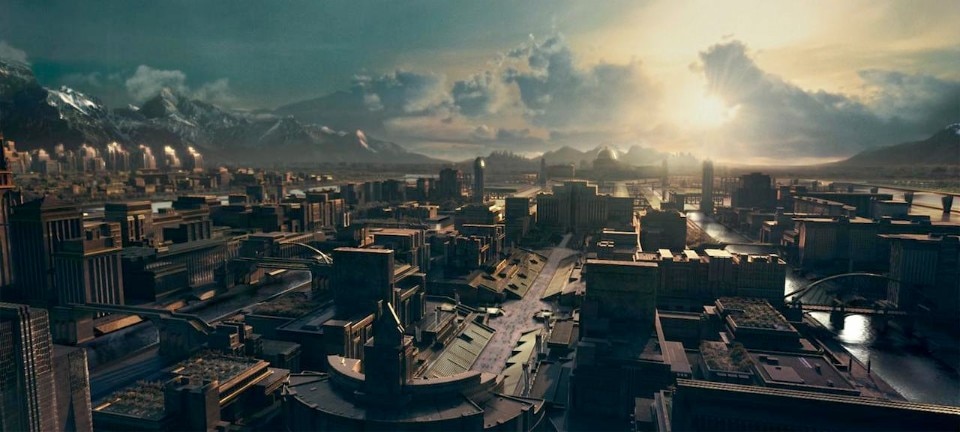
The many American districts shown in The Hunger Games represent poor provincial countries, while the only real big rich megalopolis is Panem, characterised by a European architecture from the 30s, revised and corrected as to look futuristic. There are only a few skyscrapers, not very tall, that look like rationalist buildings, if not just gigantic versions of the Reichstag. Monumental, sure, but never dense. Already in 2001 Minority Report, after having shown for two hours a metropolis bursting with people, ended with a message of hope for a better future in a wooden cabin in the middle of the forest. Now, the new science fiction movies addressing a younger audience always depict run-down cities and halved populations.
In Divergent the Chicago of the present day (therefore full of skyscrapers) is destroyed, abandoned, semi-deserted, practically a ghost town. In this dystopic movie, all human beings are selected when they are young, they are assigned a position, and they are not free to be who they want to be. There are advanced technologies, but they are unable to enjoy life, and a cataclysm has decimated the population.
The same happens in Maze Runner, where most of the people live in the desert, while in Mad Max: Fury Road (whose dystopian-desert idea was inspired by the oil crisis of the 70s) the scarcity of resources and the vastness of the nothing are the main protagonists. Even a quite forgettable film like Equals (2015) had an innovative urban vision, characterised by smooth and essential lines, a rounded rationalism in which very few people move and, most importantly, everyone looks the same.
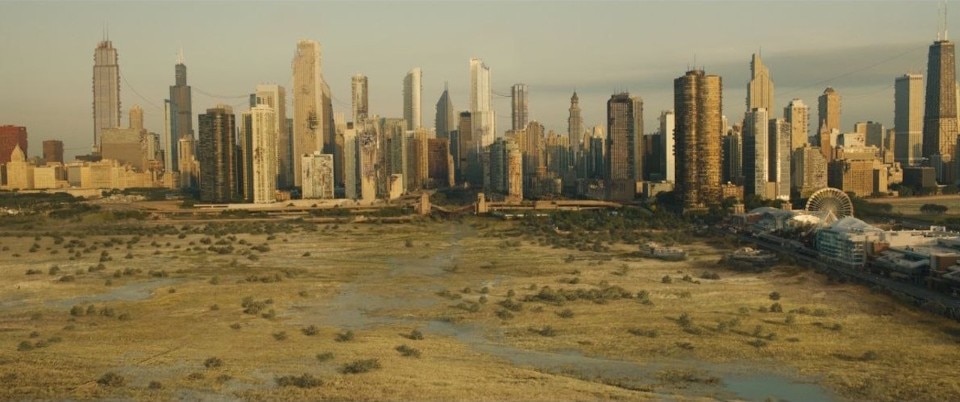
Gentrification
However, the most concrete and complete vision of a new idea of the future, more in line with the changes of our years and our cities, was provided by Her, the famous film by Spike Jonze. In that nameless city, where elements of Shanghai and Los Angeles coexist peacefully, there are no cars, only a few people walking around, just a few skyscrapers and a lot of vegetation, along with a general sense of emptiness and gentrification. All of them are white and wealthy. There is no social difference, but a single large middle-class white bourgeoisie feeling so lonely and dehumanized that even greeting cards are being written on commission (this is the protagonist’s job).
Everything is as efficient and well organized as in the most advanced Asian cities but, unlike the Japanese ones and New York (the model for the old city of the future), here there seems to space for everyone.
As always, it's not that beautiful, since it's a scenario that talks about loneliness as much as the older, classic one based on overpopulation. In Her, everyone seems to be living in a city that belongs to no one, no one seems to really be a citizen of this modern metropolis, as if no one had been born there and everyone had come to work there. It’s the perfect example of gentrification, the urban change that most characterizes the evolution of the cities of our time.
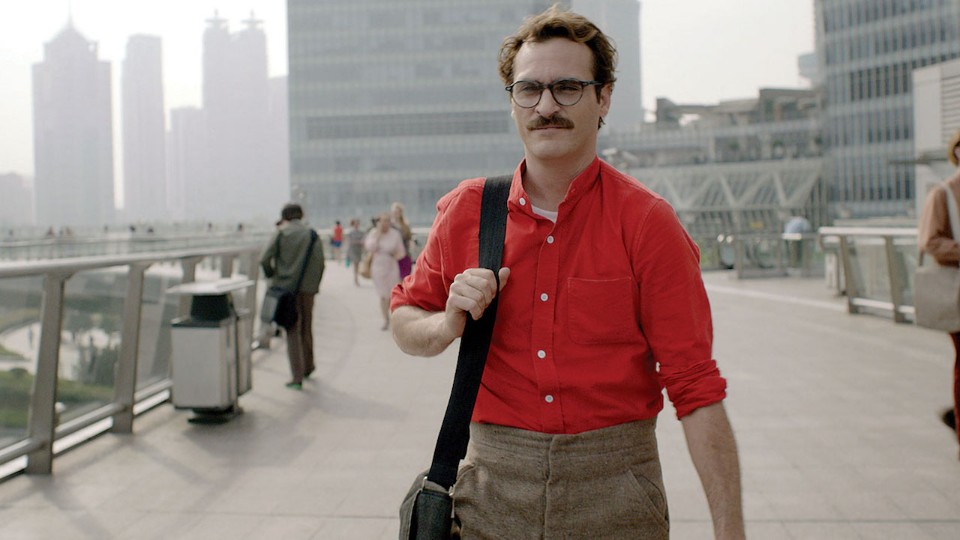
If the old cities of the future are symbols for social inequality, the new, destroyed or modern, always half empty ones, are dominated by a single class of people. Sometimes there is a dictator or an oligarchy of powerful people, but it is almost never a matter of class and profit. There's no real elite, we're all part of a fake elite. The cities of the future shown in the latest movies are starting to depict the fear of the loss of identity of the people who live in them: everyone looks the same and averagely satisfied… when in reality they are not. Even in the best cases, a hipster and tolerant urban design that seems to have met the needs of everyone, hasn’t really made anyone feel truly happy.


